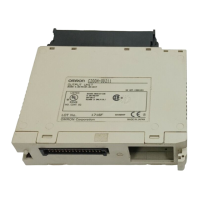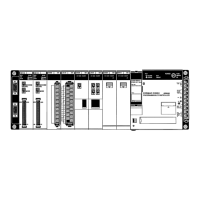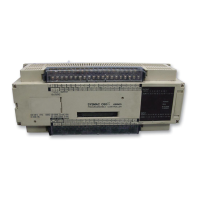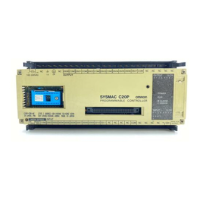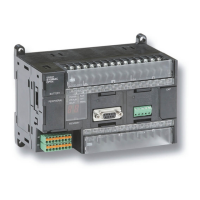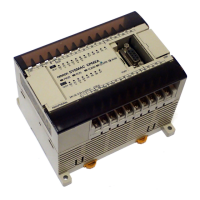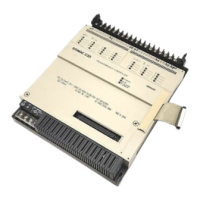137
Example The following diagram shows IL(02) being used twice with one ILC(03).
00000
00001
ILC(03)
IL(02)
00004
00005
00003
00002
IL(02)
00502
TIM 511
CP
R
CNT
001
IR 010
00100
001.5 s
TIM 511
#0015
Address Instruction Operands
00000 LD 00000
00001 IL(02)
00002 LD 00001
00003 TIM 511
# 0015
00004 LD 00002
00005 IL(02)
00006 LD 00003
00007 AND NOT 00004
00008 CNT 001
010
00009 LD 00005
00010 OUT 00502
00011 ILC(03)
When the execution condition for the first IL(02) is OFF
,
TIM
51
1 will be reset to
1.5 s, CNT 001 will not be changed, and 00502 will be turned OFF. When the
execution
condition for the first
IL(02) is ON and the execution condition for the
second
IL(02) is OFF
, TIM 51
1 will be executed according to the
status of 00001,
CNT
001 will not be changed, and 00502 will be turned OFF
. When the
execution
conditions for both the IL(02) are ON, the program will execute as written.
5-11 JUMP and JUMP END – JMP(04) and JME(05)
N: Jump number
# (00 to 99)
Ladder Symbols Definer Values
JMP(04) N
N: Jump number
# (00 to 99)
JME(05) N
Limitations Jump numbers 01 through 99 may be used only once in JMP(04) and once in
JME(05),
i.e., each can be used to define one jump only
. Jump number 00 can be
used as many times as desired.
Description JMP(04)
is always used in conjunction with JME(05) to create jumps, i.e., to skip
from
one point in a ladder diagram to another
point. JMP(04) defines the point
from
which the jump will be made; JME(05) defines the destination of the jump.
When
the execution condition for JMP(04) in ON, no jump is made and the pro
-
gram is executed consecutively as written. When the execution condition for
JMP(04)
is OFF
, a jump is made to the JME(05) with
the same jump number and
the instruction following JME(05) is executed next.
If
the jump
number for JMP(04) is between 01 and 99, jumps, when made, will go
immediately
to JME(05) with the same jump number without executing any in
-
structions
in between. The status of timers, counters, bits used in OUT
, bits used
in OUT NOT, and all other status bits controlled by the instructions between
JMP(04)
and JMP(05) will not be changed. Each of these jump numbers can be
used
to define only one jump. Because all of instructions
between JMP(04) and
JME(05)
are skipped, jump numbers 01 through 99 can
be used to reduce cycle
time.
JUMP and JUMP END – JMP(04) and JME(05) Section 5-11
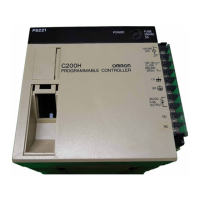
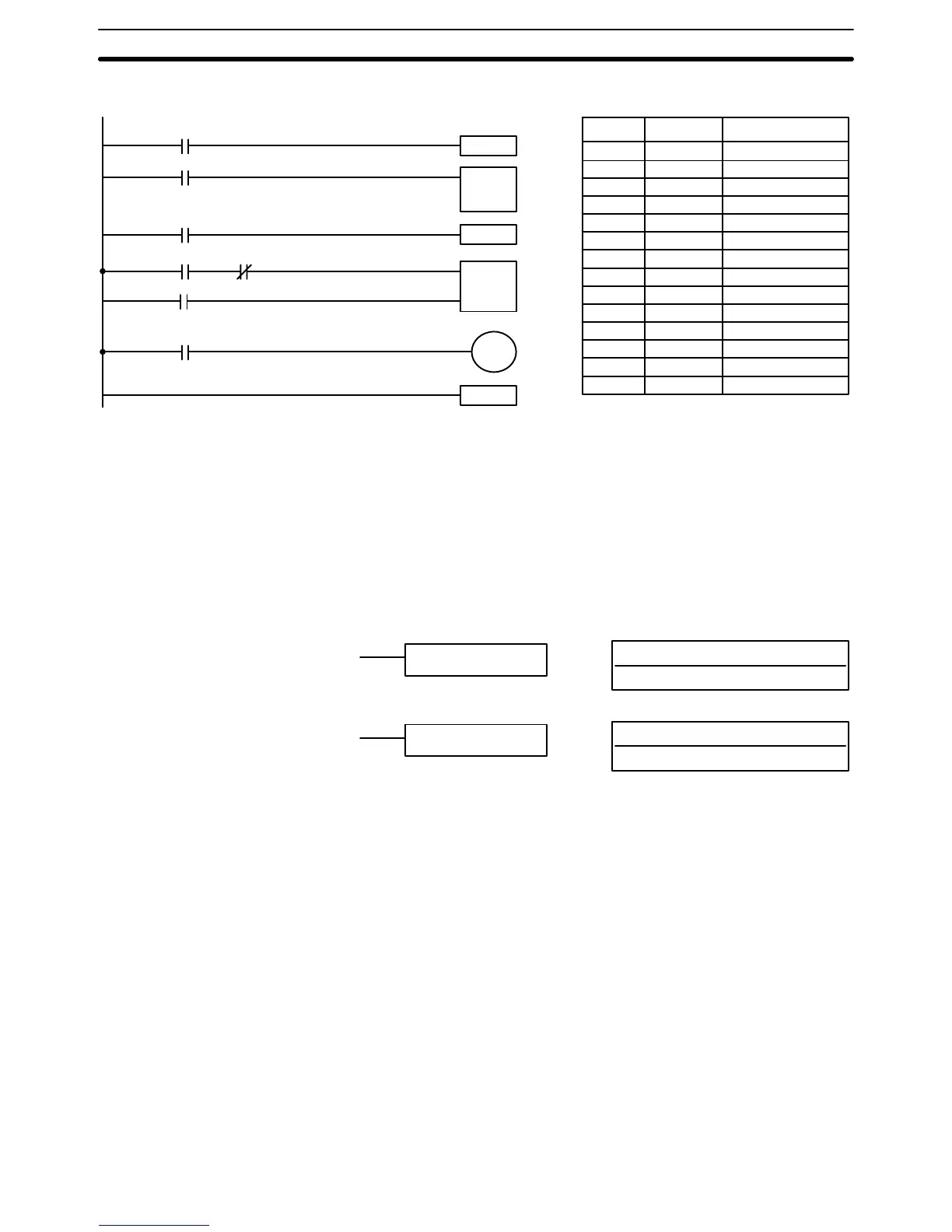